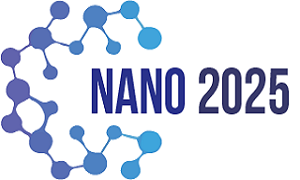2nd World Congress on
Nanotechnology
November 06-07, 2025 | London, UK
Address: The Grove, Bath Rd, Harmondsworth, West Drayton UB7 0DG, United Kingdom
Nano 2025

CSIR-Central Scientific Instruments Organization, India
Title : Indigenously Developed Screen-Printed Dual Mxene-Carbon Black Electrode for CA125 and HE4 Sensing
Abstract:
Ovarian cancer remains a leading cause of gynecological malignancy-related mortality due to the lack of early-stage diagnostic tools. The combined detection of Cancer Antigen 125 (CA125) and Human Epididymis Protein 4 (HE4) has been established as a more reliable biomarker panel for early diagnosis. In this study, an in-house fabricated dual-working electrode carbon composite screen-printed electrode (DW-SPCCE) was developed for the simultaneous electrochemical detection of CA125 and HE4. The materials used in screen printing are a composite of advanced carbon materials, carbon black-Mxene composite with conductive carbon ink, which, as a composite, resulted in a high conductivity electrode platform suitable for a variety of applications. The electrodes printed were low-cost and scalable, thereby enabling reproducible and high-throughput fabrication. The sensor surface was functionalized with specific antibodies for CA125 and HE4 to facilitate selective immune sensing. Several electrochemical, spectroscopic, and morphological characterizations were performed to check the sensor's stability, sensitivity, and specificity. The developed DW-SPCE platform demonstrated a linear response to both CA125 and HE4 in wide ranges, well covering the clinical range of both biomarkers with minimal cross-reactivity. This approach presents a cost-effective and accessible alternative for ovarian cancer biomarker detection, offering potential for point-of-care applications.
Biography:
Neelam Vishwakarma is a joint Ph.D. student at RMIT University, Australia, and a Senior Research Fellow at CSIR-CSIO, India. Her research focuses on developing multiplexed point-of-care diagnostic platforms for ovarian cancer biomarkers using microfluidics and biosensor technologies.
She holds a Master’s in Materials Science and Nanotechnology and a Bachelor’s in Biotechnology. Her expertise includes biosensors, micro-Nano fabrication, electrochemical techniques, and nanomaterial synthesis. Neelam has published in reputed journals, authored book chapters, filed patents, and registered innovative biosensing designs. She is also dedicated to mentoring and science outreach, aiming to develop affordable, integrated diagnostic tools for accessible healthcare, especially in resource-constrained settings.
